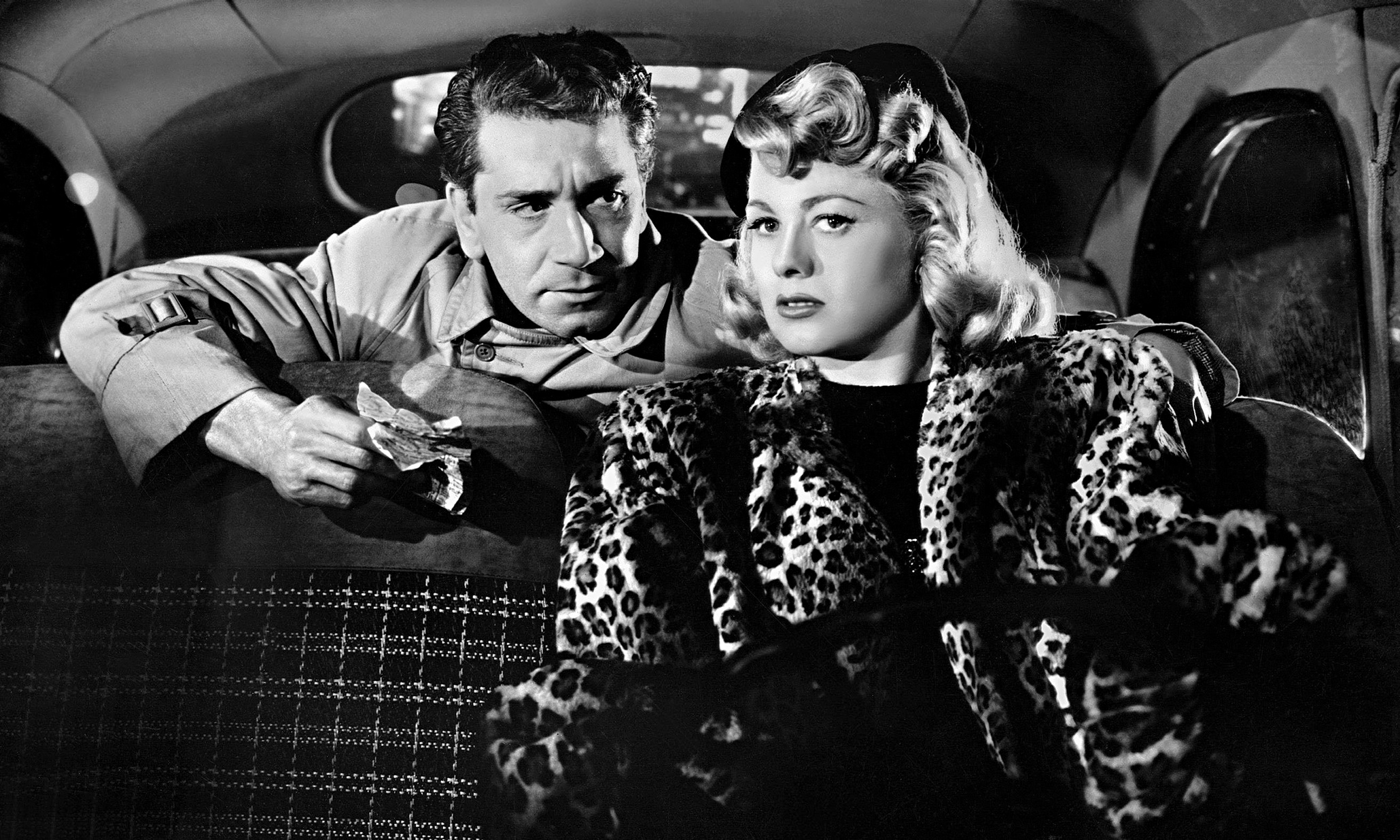10 Essential Film Noir Movies: A Binge-Worthy List

Table of Contents
The Classics That Defined the Genre
These early examples of film noir set the standard for the genre, establishing its visual style, thematic concerns, and unforgettable characters.
Casablanca (1942)
This iconic film noir transcends its genre, becoming a timeless classic. Humphrey Bogart's Rick Blaine, Ilsa Lund (Ingrid Bergman), and Victor Laszlo (Paul Henreid) are etched into cinematic history.
- Unforgettable Dialogue: Lines like "Here's looking at you, kid" have entered the lexicon of popular culture.
- Romantic Tension: The complex love triangle adds layers of emotional depth and moral ambiguity.
- Wartime Morality: The film explores themes of sacrifice, duty, and the complexities of navigating moral choices during wartime.
The Maltese Falcon (1941)
Humphrey Bogart shines as Sam Spade, the hard-boiled detective at the heart of this intricate mystery. The film's influence on subsequent noir films is undeniable.
- The Femme Fatale: Brigid O'Shaughnessy (Mary Astor) embodies the seductive and dangerous archetype.
- The Mystery of the Falcon: The legendary Maltese Falcon itself serves as a powerful symbol of greed and obsession.
- Intricate Plot: Dashiell Hammett's masterful storytelling keeps audiences captivated with its twists and turns.
Double Indemnity (1944)
Billy Wilder's masterpiece explores the seductive power of greed and betrayal through a twisted romance. Barbara Stanwyck's performance as Phyllis Dietrichson is both captivating and chilling.
- Meticulous Plotting: The carefully constructed plot unfolds with suspense and precision.
- Morally Ambiguous Characters: The protagonists are far from heroic, adding to the film's dark allure.
- Masterful Direction: Wilder’s direction masterfully blends suspense, sexuality, and moral decay.
Post-War Noir and its Evolution
The post-war era saw film noir evolve, incorporating new stylistic elements and exploring different thematic concerns.
Out of the Past (1947)
This film's complex narrative structure, employing flashbacks, is a hallmark of the genre's evolution. Robert Mitchum delivers a memorable performance as Jeff Bailey, a man haunted by his past.
- Exploration of Memory: The flashbacks delve into Bailey's troubled history, revealing the consequences of his actions.
- Guilt and Redemption: The film explores the themes of guilt, redemption, and the inescapable nature of the past.
- Complex Narrative: The non-linear storytelling keeps the audience engaged and guessing.
Sunset Boulevard (1950)
A dark satire of Hollywood's underbelly, Sunset Boulevard is a masterpiece of cinematic storytelling. Gloria Swanson delivers an unforgettable performance as Norma Desmond, a faded silent film star clinging to her past glory.
- Hollywood's Dark Side: The film reveals the bitter realities and disillusionment behind the glamorous facade of Hollywood.
- Themes of Ambition and Delusion: Norma Desmond's descent into madness highlights the destructive nature of unchecked ambition.
- Fading Glory: The film explores the fleeting nature of fame and the struggle to adapt to changing times.
Expanding the Noir Landscape
This section showcases films that further broadened the scope and stylistic approaches within the film noir genre.
The Big Sleep (1946)
Based on Raymond Chandler's novel, this film features Humphrey Bogart as Philip Marlowe, navigating a complex plot filled with multiple femme fatales.
- Complex Plot: The labyrinthine narrative is notoriously difficult to follow, adding to its enigmatic appeal.
- Multiple Femme Fatales: The film features several alluring and dangerous women, each with their own secrets.
- Iconic Marlowe: Bogart's portrayal of the world-weary detective cemented the character in popular culture.
Kiss Me Deadly (1955)
This film exemplifies the hard-boiled style of film noir, pushing the boundaries with its violent climax and cynical tone. Ralph Meeker’s performance is both intense and unforgettable.
- Hard-Boiled Style: The film's unflinching portrayal of violence and moral ambiguity is characteristic of the genre's harder edge.
- Violent Climax: The shocking ending leaves a lasting impression.
- Ambiguous Ending: The film's open ending invites multiple interpretations, enhancing its mysterious quality.
Noir's Influence Beyond the Screen
The impact of film noir extends beyond its golden age, influencing later filmmakers and genres.
Touch of Evil (1958)
Orson Welles's masterpiece showcases innovative cinematography and explores themes of corruption and prejudice.
- Innovative Cinematography: The famous long opening shot is a testament to Welles's visual genius.
- Moral Ambiguity: The film presents morally complex characters and situations, reflecting the genre's hallmarks.
- Exploration of Corruption: The film delves into the dark underbelly of law enforcement and societal corruption.
Chinatown (1974)
This neo-noir classic, directed by Roman Polanski, features Jack Nicholson and Faye Dunaway in a complex tale of corruption and deceit in 1930s Los Angeles.
- Neo-Noir Elements: The film incorporates many of the classic noir tropes while updating them for a modern audience.
- Intricate Plot: The twisting plot keeps the audience guessing until the very end.
- Themes of Corruption: The film explores themes of corruption, land rights, and the dark side of the city.
A Modern Noir Masterpiece
This final entry showcases how the spirit of film noir continues to inspire filmmakers today.
Blade Runner (1982)
Ridley Scott's Blade Runner is a science fiction film that embraces many of the thematic and visual elements of film noir.
- Dystopian Setting: The film's bleak, futuristic cityscape evokes the dark, urban atmosphere of classic noir.
- Philosophical Questions: The film explores existential themes of humanity, identity, and artificial intelligence.
- Iconic Visuals: The film's stunning visuals and atmosphere are iconic in science fiction cinema.
Conclusion
From the classic wartime drama of Casablanca to the dystopian future of Blade Runner, this list of 10 essential film noir movies showcases the genre's versatility and lasting impact. These films, with their unforgettable characters, intricate plots, and morally ambiguous situations, exemplify the key characteristics of film noir: dark shadows, cynical protagonists, seductive femmes fatales, and a pervasive sense of unease and suspense. Dive into the shadows with these 10 essential film noir movies! Start your film noir journey today and share your favorites using #filmnoir #classicmovies #movierecommendations.

Featured Posts
-
 10 Essential Film Noir Movies A Binge Worthy List
May 10, 2025
10 Essential Film Noir Movies A Binge Worthy List
May 10, 2025 -
 Stephen Kings 2024 Movie Releases The Monkey And Two More To Anticipate
May 10, 2025
Stephen Kings 2024 Movie Releases The Monkey And Two More To Anticipate
May 10, 2025 -
 Red Wings Playoff Bid In Jeopardy Following Vegas Setback
May 10, 2025
Red Wings Playoff Bid In Jeopardy Following Vegas Setback
May 10, 2025 -
 Punjab Government Announces Skill Development Initiative For Transgender Community
May 10, 2025
Punjab Government Announces Skill Development Initiative For Transgender Community
May 10, 2025 -
 The Lasting Effects Of Trumps Executive Orders On Transgender People A Call For Testimony
May 10, 2025
The Lasting Effects Of Trumps Executive Orders On Transgender People A Call For Testimony
May 10, 2025
